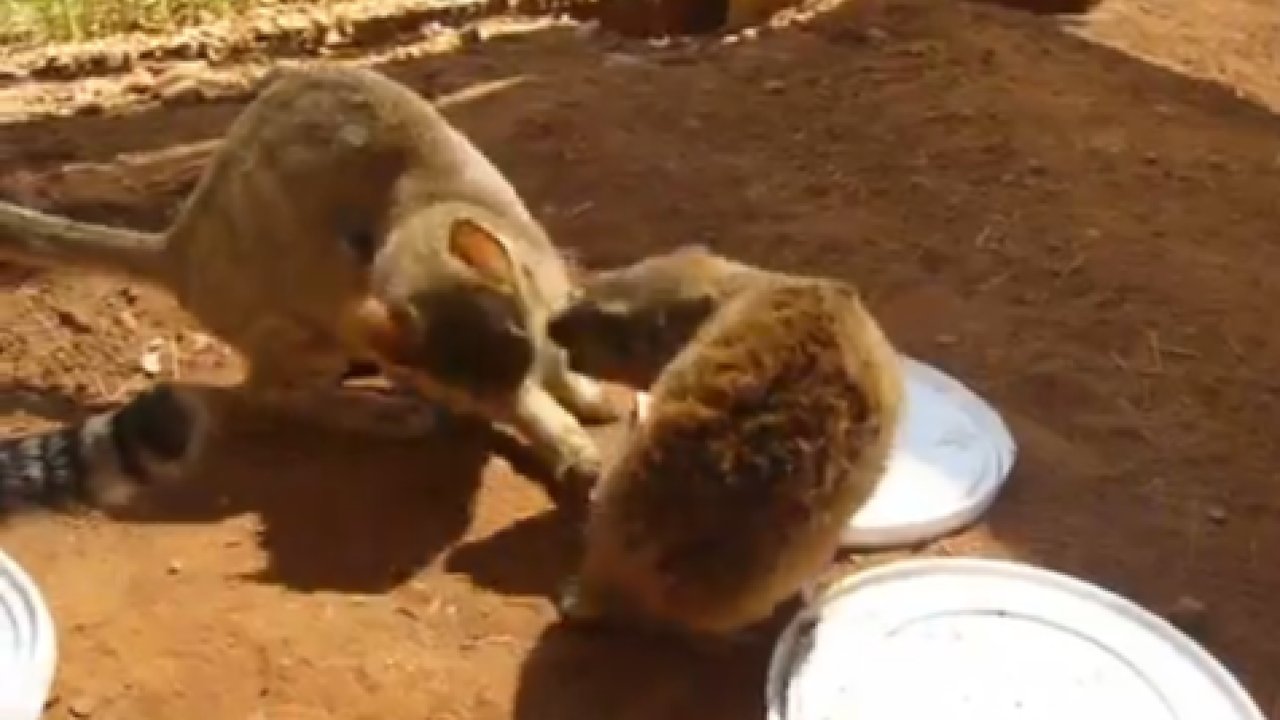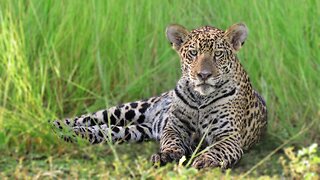Premium Only Content

Rescued Rock Dassie doesn't want the other animals to eat
This rescued Rock Dassie shares the enclosure with other rescued animals, but thinks it is the boss, and does not want to let other animals eat, even carnivores! Animals can have such strong personalities!
The Rock Dassie (Procavia capensis), also known as the Rock Hyrax, or sometimes just Dassie, is a medium-sized mammal that occurs in Africa and the Middle East. It can be found in a wide variety of habitats, such as rainforests, arid deserts, from sea level to Mount Kenya, although they are typically associated with cliffs, boulders, and rocky outcrops, which gives it its name.
Its great range means that there are many variations of the same species; in fact, 17 subspecies are recognized: Procavia capensis capensis (Cape Hyrax), Procavia capensis bamendae (Bamenda Highlands Rock Hyrax), Procavia capensis habessinica (Abyssinian Hyrax), Procavia capensis jayakari (Arabian Rock Hyrax), Procavia capensis johnstoni (Johnston's Hyrax), Procavia capensis matschiei (Tanzania Rock Hyrax), Procavia capensis ruficeps (Western Rock Hyrax), Procavia capensis syriaca (Syrian Hyrax), Procavia capensis welwitschii (Kakoveld Hyrax), Procavia capensis capillosa, Procavia capensis erlangeri, Procavia capensis jacksoni, Procavia capensis kerstingi, Procavia capensis mackinderi, Procavia capensis pallida, Procavia capensis scioana, and Procavia capensis sharica. It is, however, the sole extant member of the Procavia genus, but shares the Procaviidae family with the Southern Tree Hyrax (Dendrohyrax arboreus), the Western Tree Hyrax (Dendrohyrax dorsalis), the Eastern Tree Hyrax (Dendrohyrax validus), and the Yellow-spotted Rock Hyrax (Heterohyrax brucei).
Rock Dassies are herbivores and eat a variety of grasses, forbs and shrubs, buds, fruits and berries. Adults may reach a length of 50 cm and weigh around 4 kg, although there is a subtle sexual dimorphism, and males are about 10% heavier than females.
The color of their coat varies according to the habitat they live in, from dark brown in wetter environments, to light grey in desert areas.
-
 0:40
0:40
NataliaCara
2 years agoEncountering a beautiful jaguar cub in the wild!
1.47K2 -
 2:46
2:46
KMTV
3 years agoHundreds of animals rescued by NHS
16 -
 LIVE
LIVE
SpartakusLIVE
3 hours ago#1 Birthday Boy Celebrates with MASSIVE and HUGE 4.8-Hour Stream
337 watching -
 LIVE
LIVE
Barry Cunningham
2 hours agoBREAKING NEWS: PRESIDENT TRUMP THIS INSANITY MUST END NOW!
12,399 watching -
 LIVE
LIVE
StevieTLIVE
1 hour agoWednesday Warzone Solo HYPE #1 Mullet on Rumble
82 watching -
 LIVE
LIVE
Geeks + Gamers
2 hours agoGeeks+Gamers Play- MARIO KART WORLD
239 watching -
 25:12
25:12
Jasmin Laine
7 hours agoDanielle Smith’s EPIC Mic Drop Fact Check Leaves Crowd FROZEN—Poilievre FINISHES the Job
3.68K13 -
 LIVE
LIVE
ZWOGs
10 hours ago🔴LIVE IN 1440p! - SoT w/ Pudge & SBL, Ranch Sim w/ Maam & MadHouse, Warzone & More - Come Hang Out!
54 watching -
 LIVE
LIVE
This is the Ray Gaming
21 minutes agoI'm Coming Home Coming Home Tell The World... | Rumble Premium Creator
43 watching -
 LIVE
LIVE
GrimmHollywood
9 hours ago🔴LIVE • GRIMM HOLLYWOOD • GEARS OF WAR RELOADED CUSTOMS • BRRRAP PACK •
47 watching